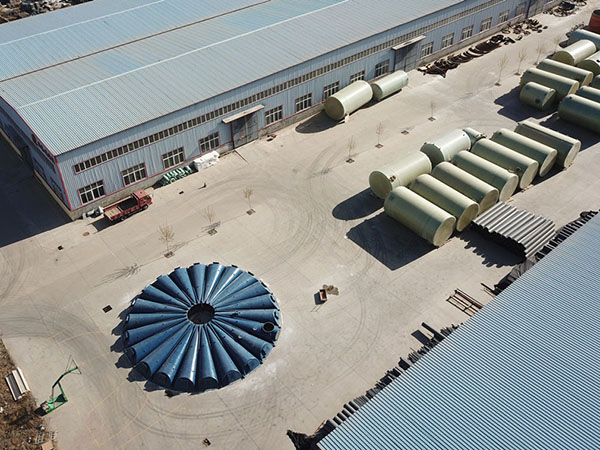
-
 Afrikaans
Afrikaans -
 Albanian
Albanian -
 Amharic
Amharic -
 Arabic
Arabic -
 Armenian
Armenian -
 Azerbaijani
Azerbaijani -
 Basque
Basque -
 Belarusian
Belarusian -
 Bengali
Bengali -
 Bosnian
Bosnian -
 Bulgarian
Bulgarian -
 Catalan
Catalan -
 Cebuano
Cebuano -
 China
China -
 China (Taiwan)
China (Taiwan) -
 Corsican
Corsican -
 Croatian
Croatian -
 Czech
Czech -
 Danish
Danish -
 Dutch
Dutch -
 English
English -
 Esperanto
Esperanto -
 Estonian
Estonian -
 Finnish
Finnish -
 French
French -
 Frisian
Frisian -
 Galician
Galician -
 Georgian
Georgian -
 German
German -
 Greek
Greek -
 Gujarati
Gujarati -
 Haitian Creole
Haitian Creole -
 hausa
hausa -
 hawaiian
hawaiian -
 Hebrew
Hebrew -
 Hindi
Hindi -
 Miao
Miao -
 Hungarian
Hungarian -
 Icelandic
Icelandic -
 igbo
igbo -
 Indonesian
Indonesian -
 irish
irish -
 Italian
Italian -
 Japanese
Japanese -
 Javanese
Javanese -
 Kannada
Kannada -
 kazakh
kazakh -
 Khmer
Khmer -
 Rwandese
Rwandese -
 Korean
Korean -
 Kurdish
Kurdish -
 Kyrgyz
Kyrgyz -
 Lao
Lao -
 Latin
Latin -
 Latvian
Latvian -
 Lithuanian
Lithuanian -
 Luxembourgish
Luxembourgish -
 Macedonian
Macedonian -
 Malgashi
Malgashi -
 Malay
Malay -
 Malayalam
Malayalam -
 Maltese
Maltese -
 Maori
Maori -
 Marathi
Marathi -
 Mongolian
Mongolian -
 Myanmar
Myanmar -
 Nepali
Nepali -
 Norwegian
Norwegian -
 Norwegian
Norwegian -
 Occitan
Occitan -
 Pashto
Pashto -
 Persian
Persian -
 Polish
Polish -
 Portuguese
Portuguese -
 Punjabi
Punjabi -
 Romanian
Romanian -
 Russian
Russian -
 Samoan
Samoan -
 Scottish Gaelic
Scottish Gaelic -
 Serbian
Serbian -
 Sesotho
Sesotho -
 Shona
Shona -
 Sindhi
Sindhi -
 Sinhala
Sinhala -
 Slovak
Slovak -
 Slovenian
Slovenian -
 Somali
Somali -
 Spanish
Spanish -
 Sundanese
Sundanese -
 Swahili
Swahili -
 Swedish
Swedish -
 Tagalog
Tagalog -
 Tajik
Tajik -
 Tamil
Tamil -
 Tatar
Tatar -
 Telugu
Telugu -
 Thai
Thai -
 Turkish
Turkish -
 Turkmen
Turkmen -
 Ukrainian
Ukrainian -
 Urdu
Urdu -
 Uighur
Uighur -
 Uzbek
Uzbek -
 Vietnamese
Vietnamese -
 Welsh
Welsh -
 Bantu
Bantu -
 Yiddish
Yiddish -
 Yoruba
Yoruba -
 Zulu
Zulu
GRP Pipes and Fittings Applications in Marine Vessel Construction and Design
GRP Pipes and Fittings for Shipbuilding
In the maritime industry, the construction of ships and marine vessels requires materials that can withstand harsh environmental conditions while ensuring optimal performance and durability. Glass Reinforced Plastic (GRP) pipes and fittings have emerged as a preferred choice for shipbuilding, owing to their remarkable properties and advantages over traditional materials like metal and PVC. This article explores the characteristics, benefits, and applications of GRP pipes and fittings in shipbuilding.
What are GRP Pipes and Fittings?
GRP pipes and fittings are composite materials made from a combination of glass fibers and a resin matrix. The glass fibers lend tensile strength and flexibility, while the resin provides the necessary bonding and weather resistance. This combination results in a lightweight, high-strength, and corrosion-resistant product, which is particularly beneficial in the marine environment where exposure to saltwater, humidity, and varying temperatures is common.
Key Characteristics
1. Corrosion Resistance One of the most significant advantages of GRP materials is their immunity to corrosion. Unlike steel and iron, which are prone to rust and require protective coatings, GRP pipes maintain their integrity even when exposed to aggressive substances commonly found in marine environments.
2. Lightweight GRP is considerably lighter than traditional materials, enabling easier handling and installation. This attribute can lead to reduced fuel consumption and improved overall efficiency in shipping operations.
3. High Strength-to-Weight Ratio The composite nature of GRP gives it remarkable strength without the corresponding weight. This feature makes GRP pipes ideal for various applications on ships, including ballast systems, exhaust systems, and water distribution.
4. Thermal Insulation GRP offers superior thermal insulation properties, making it suitable for applications requiring temperature regulation. This can be particularly advantageous in systems like HVAC where maintaining specific temperatures is crucial.
grp pipes and fittings for ship building

5. Low Maintenance GRP's inherent resistance to corrosion and degradation translates to lower maintenance costs and longer service life. Ship operators can save substantial amounts of money and time that would otherwise be spent on regular repairs and replacements.
Applications in Shipbuilding
GRP pipes and fittings find extensive use in various systems aboard ships, enhancing reliability and performance. Some common applications include
- Ballast Water Systems Given their corrosion resistance and lightweight nature, GRP pipes are widely utilized in ballast water management systems, ensuring that these systems function effectively without adding unnecessary weight to the vessel.
- Wastewater Management GRP is ideal for low-pressure sewage systems due to its ability to resist chemical attacks from various waste products, ensuring a longer life cycle for the pipes.
- Cooling Systems The thermal insulation properties of GRP make it an excellent choice for cooling water lines and heat exchangers, which are critical in managing engine temperatures.
- Firefighting Systems GRP fittings can be employed in firefighting systems, thanks to their robust performance under extreme conditions and resistance to the chemicals used in firefighting.
Conclusion
The adoption of GRP pipes and fittings in shipbuilding represents a significant evolution in marine engineering. Their outstanding corrosion resistance, lightweight, high strength-to-weight ratio, thermal insulation properties, and low maintenance requirements make them an ideal choice for various onboard applications. As the maritime industry continues to emphasize efficiency and sustainability, GRP materials are likely to play an increasingly pivotal role in shaping the future of shipbuilding. Embracing these innovative materials not only ensures compliance with environmental regulations but also contributes to the overall performance and longevity of naval vessels.
Latest news
-
Exploring the Benefits of Top Hammer Drifter Rods for Enhanced Drilling PerformanceNewsJun.10,2025
-
High-Precision Fiberglass Winding Machine for GRP/FRP Pipe Production – Reliable & Efficient SolutionsNewsJun.10,2025
-
FRP Pipes & Fittings for Shipbuilding - Corrosion-Resistant & LightweightNewsJun.09,2025
-
Premium FRP Flooring Solutions Durable & Slip-ResistantNewsJun.09,2025
-
Premium Fiberglass Rectangular Tanks Durable & Lightweight SolutionNewsJun.09,2025
-
Tapered Drill String Design Guide Durable Performance & UsesNewsJun.09,2025









